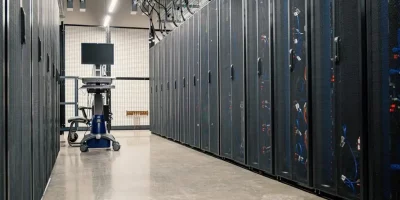The digital landscape has witnessed remarkable shifts in recent years, most notably in how institutions store and manage their data. Traditional data centres, which once reigned supreme, have seen a trend toward colocation hosting. The 2019 Gartner report highlighted an intriguing insight: enterprises with outdated data centres are more inclined to outsource their physical infrastructure management to service providers rather than building or expanding their own facilities. This inclination is primarily motivated by the prohibitive capital costs associated with traditional data centre expansion.
Colocation services have emerged as the knight in shining armour for many. Previously, only mammoth corporations with seemingly bottomless pockets could consider having dedicated data centres. However, with colocation centres, the same level of infrastructure and security is attainable without the astronomical costs of maintenance.
The Essence of Data Centres
Before diving deep, it’s paramount to understand what a data centre is. It’s either a physical or cloud-based facility where critical business applications and data reside. A trinity of elements forms the backbone of data centres: storage, computing, and networking equipment. High-end servers predominantly offer the computational power required to run applications.
The pivotal role of a data centre is evident. As more enterprises migrate their treasure troves of data to cloud platforms, there’s an undying emphasis on reliability, security, and efficiency. In this digital era, data centres are not just storage houses; they’re communication facilitators between various locations, including cloud-based and on-site. They ensure seamless management of workloads across physical data centres, private clouds, and multi-cloud environments.
The Case for On-Premises Storage in UK Higher Education
On-premises storage isn’t just a buzzword; it’s a pivotal aspect of many UK universities’ data management strategy. It essentially refers to data stored on hardware present within the institution’s premises, such as servers or computers. When a university buys a server and places it within its domain, all data saved on this server is considered “on-premises.”
Having on-premises storage means universities have complete control over the equipment. They are solely responsible for maintenance, upgrades, and costs. While the tidal wave of cloud computing has swept many off their feet, certain niches within universities still lean heavily on the robustness of on-site storage solutions. For instance, at Baldwin Wallace, virtual desktops are maintained on over 1,000 endpoints across the campus. These virtual desktop infrastructures not only bolster student learning and faculty research but also tap into the on-premises computing resources, occasionally running into challenges like latency, which are influenced by storage dynamics.
On-Premise Servers and Databases in Practice
The global trend might be leaning towards Software as a Service (SaaS) over on-premise solutions, but there are compelling reasons why certain sectors, including UK universities, still rely heavily on on-premise setups. Entities dealing with sensitive data, such as banks, insurance entities, and even academic institutions, often lean towards on-premise solutions, primarily to reduce third-party involvement in their data processing.
Despite the undeniable advantages, on-premise solutions come with their share of challenges. One glaring obstacle is cost. Setting up an on-premise server, complemented with the requisite software, can set institutions back by up to £5,000. Add installation costs, and the budget swells further.
On-Premise Data Centres: Weighing the Pros and Cons
- Pros:
- Greater Control: On-premise solutions provide institutions with unparalleled control over their data and systems. This is pivotal for entities dealing with sensitive data.
- 24/7 Access: On-site hardware ensures that university IT staff can readily access physical servers for any maintenance or troubleshooting, leading to faster issue resolution.
- Cons:
- High Labour Costs: Maintaining an on-premise data centre requires dedicated IT staff, translating to elevated costs.
- Physical Space Limitations: Space constraints can curtail the scalability of an institution’s IT infrastructure.
Deciding on the Right Data Solution
Understanding the nuanced differences, advantages, and potential pitfalls of cloud and on-premise data centres is vital. UK universities, given their unique needs and constraints, must make informed decisions. While some might benefit from the security and control of on-premise solutions, others might find a hybrid approach more suitable.
Final Thoughts
In conclusion, as the landscape of data storage and management continually evolves, UK universities stand at a crossroads. The choices they make today will not only influence their immediate operational efficiency but will also have lasting impacts on future research, collaborations, and digital innovations. It’s more than just choosing between cloud, on-premise, or hybrid solutions; it’s about positioning themselves for a future that’s increasingly data-driven.
As these institutions grapple with these critical decisions, having the right partner can make all the difference. At Secure IT Environments, we boast a track record of expertise and excellence in catering to data centre needs. With our guidance, universities can ensure that their data infrastructure is not only robust and secure today but also primed for the challenges and opportunities of tomorrow.






